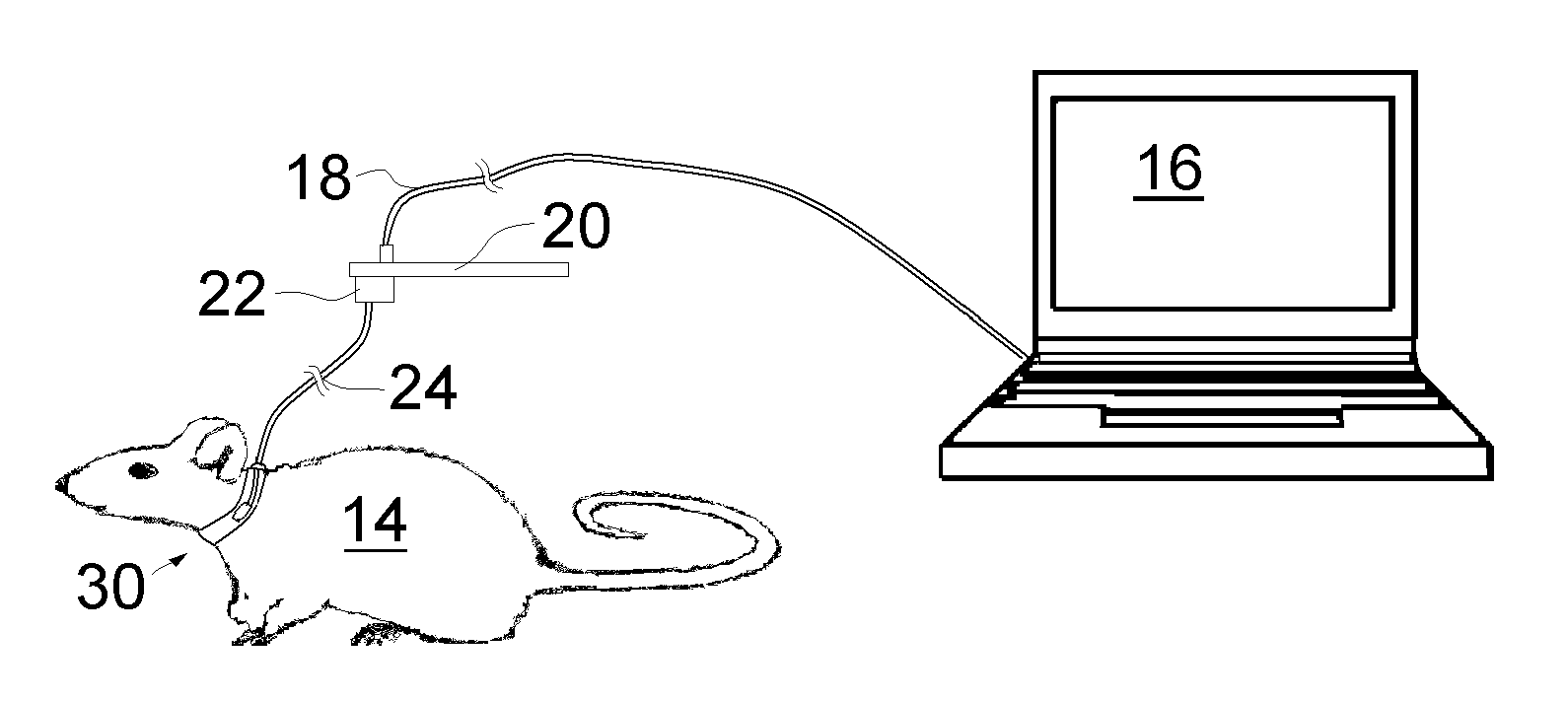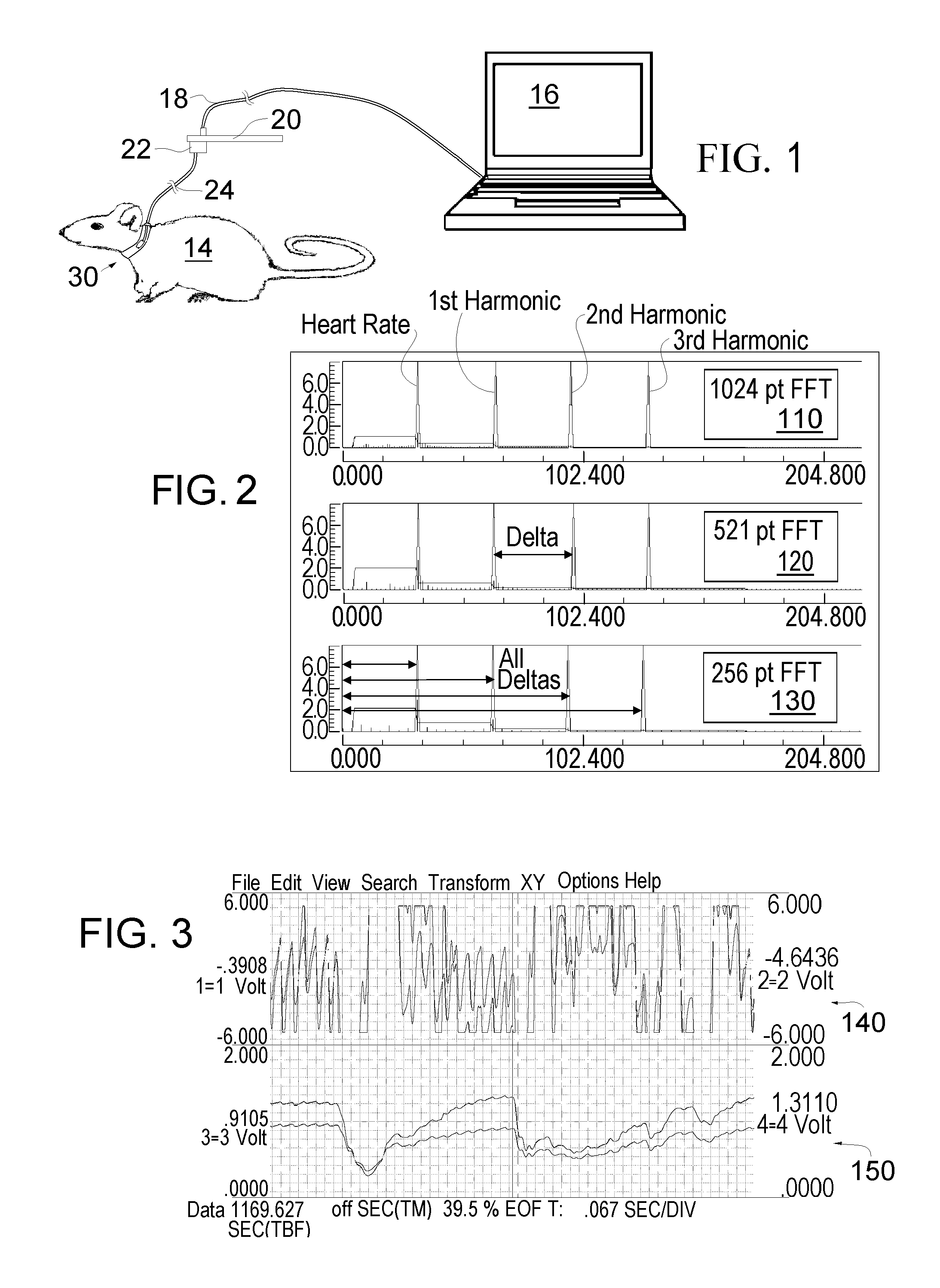Algorithms for calculation of physiologic parameters from noninvasive photoplethysmographic sensor measurements of awake animals
a non-invasive, awake animal technology, applied in the field of animal research, can solve the problems of inability to use methods, limited use to pulmonary functions, and inability to achieve physiologic parameters, so as to reduce the amount of time-history, improve heart and breathing signal strength, and increase the delta peak
- Summary
- Abstract
- Description
- Claims
- Application Information
AI Technical Summary
Benefits of technology
Problems solved by technology
Method used
Image
Examples
Embodiment Construction
[0024]In summary, the present invention relates to a noninvasive photoplethysmographic sensor platform for mobile awake animals, such as rats and mice 14 that are utilized in a laboratory environment. Photoplethysmographic measurements on laboratory animals have most often been accomplished on restrained and / or anesthetized animals. This limits the research than can be conducted. Further, in the pulse oximetry field there has been a lack of adequate photoplethysmographic sensors for small mice (and even small rats), until the advent of the Mouse Ox™ brand pulse oximeters by Starr Life Sciences in 2005. Prior to this development, commercially available pulse oximeters could provide heart rate data up to about 350 or 450 beats per minute (and even this range required special software modifications for some sensors), which were basically suitable for rats but not small mice given that the small mouse will have heart rates in the range of 400 to 800 beats per minute. The Mouse Ox™ brand...
PUM
 Login to View More
Login to View More Abstract
Description
Claims
Application Information
 Login to View More
Login to View More - R&D
- Intellectual Property
- Life Sciences
- Materials
- Tech Scout
- Unparalleled Data Quality
- Higher Quality Content
- 60% Fewer Hallucinations
Browse by: Latest US Patents, China's latest patents, Technical Efficacy Thesaurus, Application Domain, Technology Topic, Popular Technical Reports.
© 2025 PatSnap. All rights reserved.Legal|Privacy policy|Modern Slavery Act Transparency Statement|Sitemap|About US| Contact US: help@patsnap.com


